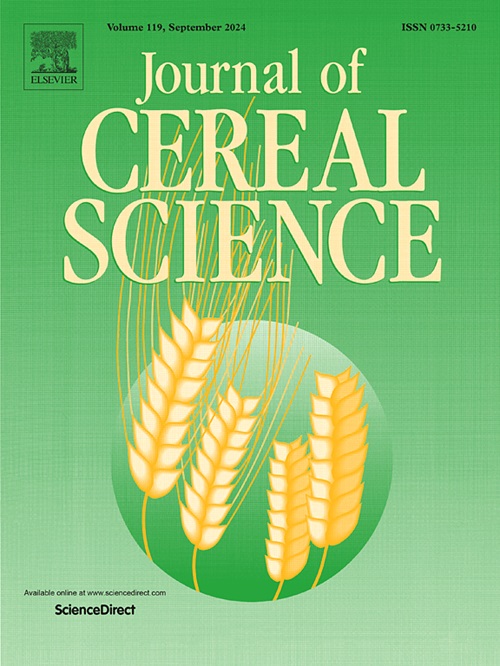Air classification modifies the susceptibility of Brewer's spent grain to enzymatic hydrolysis and the protein content and functional properties of derived hydrolysates
IF 3.7
2区 农林科学
Q2 FOOD SCIENCE & TECHNOLOGY
引用次数: 0
Abstract
Brewer's spent grain (BSG), a residual output from beer production, is abundant in protein yet remains largely underutilized. This study investigates the separation of BSG into fine (FF) and coarse fractions (CF) using air classification. At an optimal frequency of 60 Hz, the FF achieved a 62.63 % yield and 80.30 % protein recovery, characterized by a smaller mean particle size of 27.31 μm and enhanced structural flexibility. In contrast, the CF, with a larger mean particle size of 259.46 μm, exhibited superior water- and oil-holding capacities and greater gastrointestinal digestibility due to its composition and structure. Enzymatic hydrolysis of these fractions revealed that FF hydrolysates had higher protein recovery and improved foam and emulsion stability, while CF hydrolysates showed a higher degree of hydrolysis and superior foaming and emulsifying properties. These findings suggest that air classification followed by enzymatic hydrolysis is an effective strategy for fractionating BSG into fiber-rich and protein-rich components, facilitating the development of BSG into diverse food products with distinct nutritional and functional benefits.

空气分级改变了布鲁尔废谷物对酶水解的敏感性和衍生水解产物的蛋白质含量和功能特性
啤酒生产的残余产物啤酒的废谷物(BSG)富含蛋白质,但在很大程度上仍未充分利用。研究了空气分选法分离粗粉和细粉的工艺。在最佳频率为60 Hz时,FF的产率为62.63%,蛋白质回收率为80.30%,平均粒径较小(27.31 μm),结构柔韧性增强。相比之下,CF的平均粒径为259.46 μm,由于其组成和结构的原因,CF具有更好的水和油保持能力和更高的胃肠道消化率。酶解这些馏分表明,FF水解产物具有更高的蛋白质回收率和更好的泡沫和乳液稳定性,而CF水解产物具有更高的水解程度和更好的泡沫和乳化性能。上述研究结果表明,空气分级后酶解是将BSG分离成富含纤维和蛋白质组分的有效策略,有助于将BSG开发成具有独特营养和功能效益的多种食品。
本文章由计算机程序翻译,如有差异,请以英文原文为准。
求助全文
约1分钟内获得全文
求助全文
来源期刊

Journal of Cereal Science
工程技术-食品科技
CiteScore
7.80
自引率
2.60%
发文量
163
审稿时长
38 days
期刊介绍:
The Journal of Cereal Science was established in 1983 to provide an International forum for the publication of original research papers of high standing covering all aspects of cereal science related to the functional and nutritional quality of cereal grains (true cereals - members of the Poaceae family and starchy pseudocereals - members of the Amaranthaceae, Chenopodiaceae and Polygonaceae families) and their products, in relation to the cereals used. The journal also publishes concise and critical review articles appraising the status and future directions of specific areas of cereal science and short communications that present news of important advances in research. The journal aims at topicality and at providing comprehensive coverage of progress in the field.
 求助内容:
求助内容: 应助结果提醒方式:
应助结果提醒方式:


